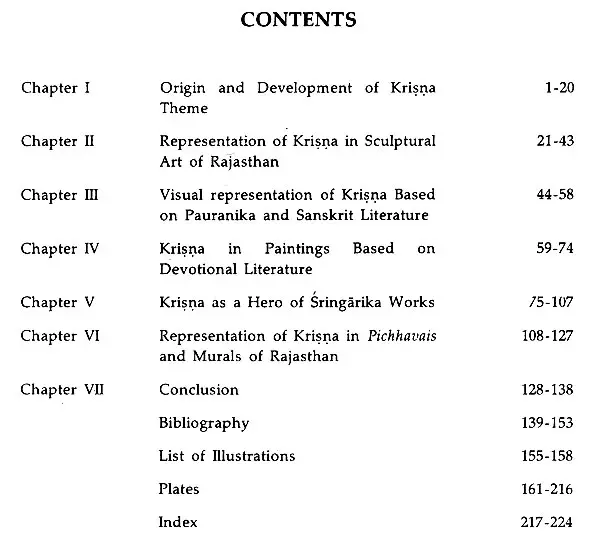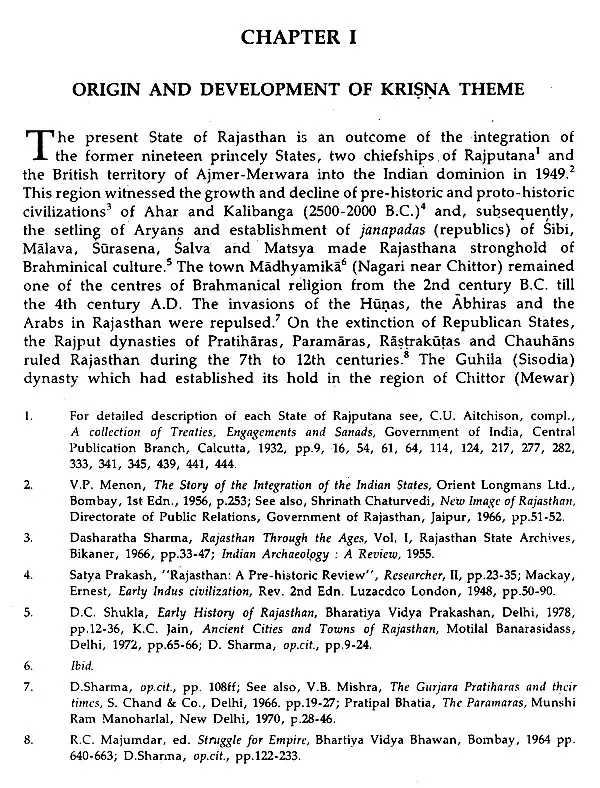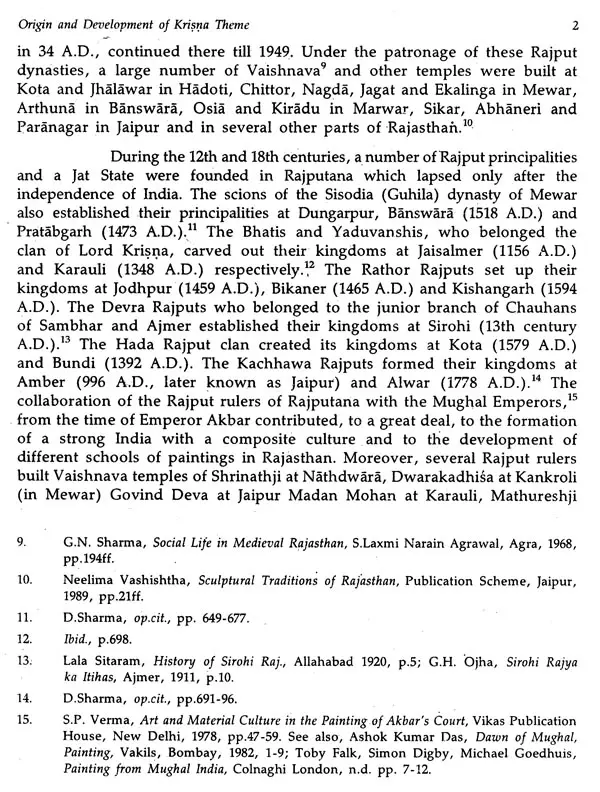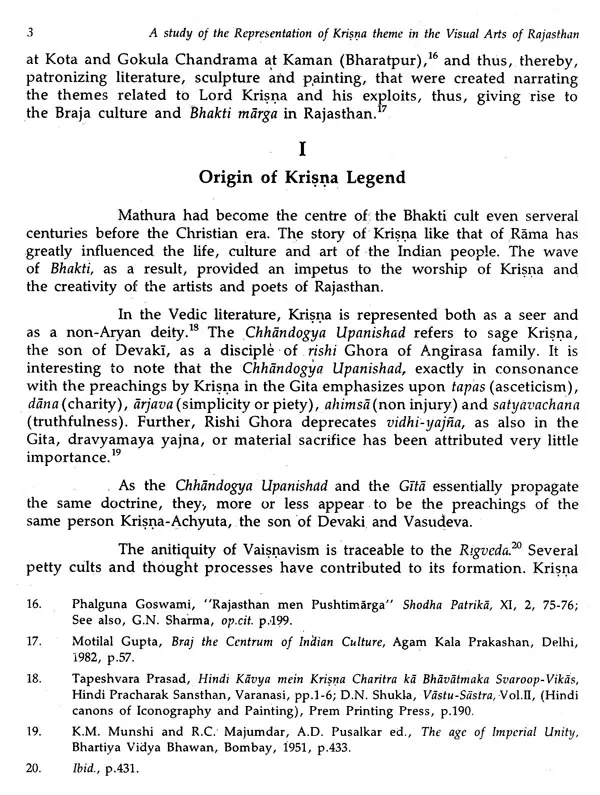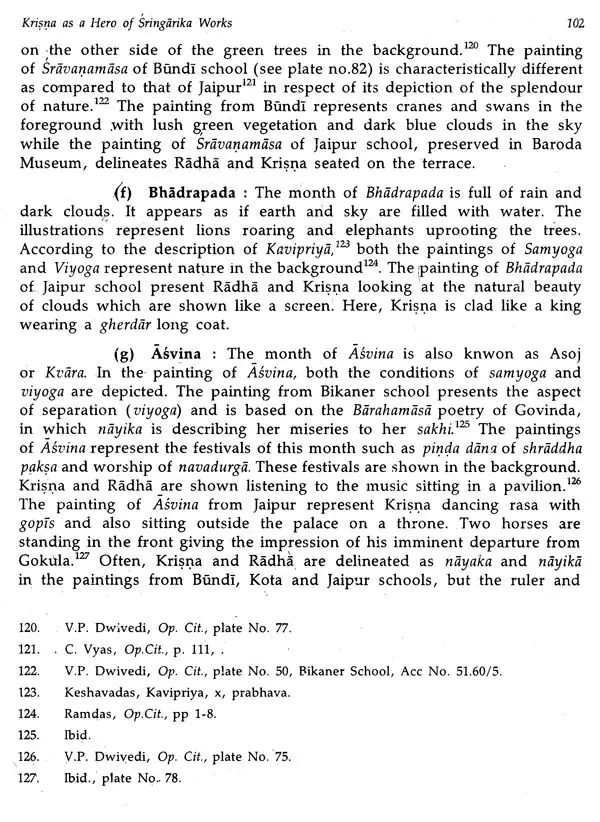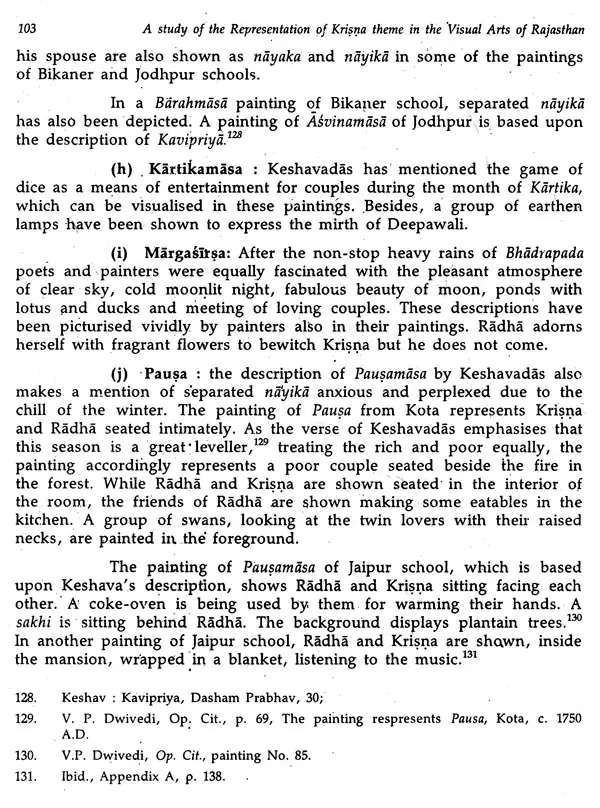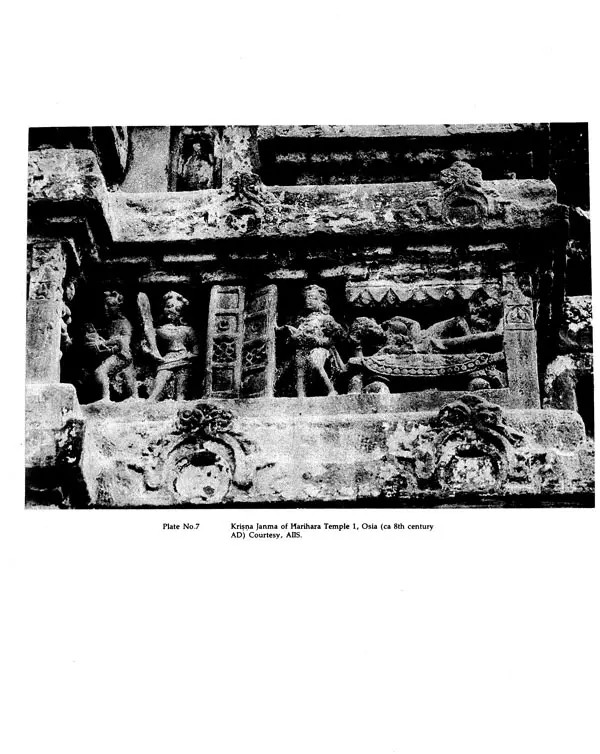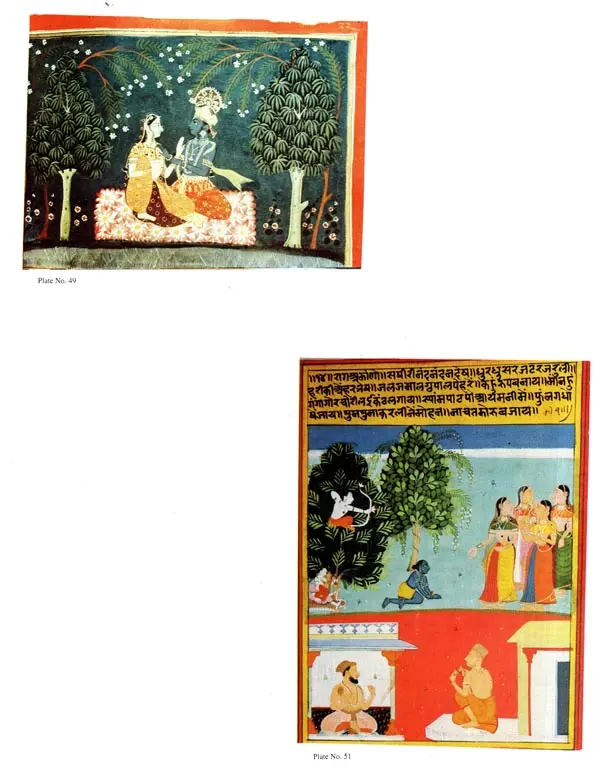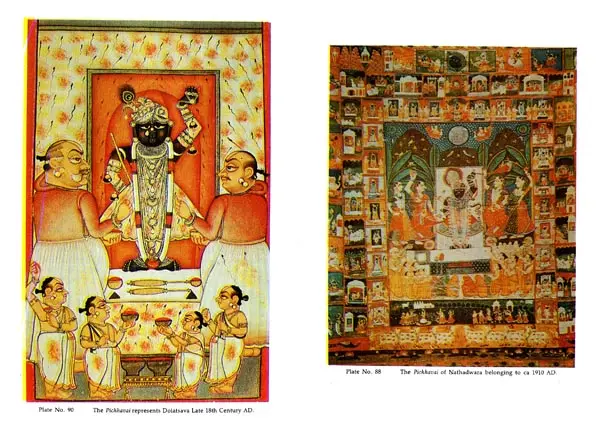
Krisna Theme in the Visual Arts of Rajasthan
Book Specification
| Item Code: | UAD582 |
| Author: | Vandana Khanna |
| Publisher: | Publication Scheme Jaipur |
| Language: | English |
| Edition: | 1998 |
| ISBN: | 818678232X |
| Pages: | 230 (Throughout Color and B/W Illustrations) |
| Cover: | HARDCOVER |
| Other Details | 11.50 X 9.00 inch |
| Weight | 1.04 kg |
Book Description
The present work is an exhaustive study of Krishna theme in literature painting and sculpture of Rajasthan front 200 B.C. to 1900 A.D. It deals with a vast area of research on the depiction of Krishna in reliefs of temples, baoris, chhatris etc. on the one hand and murals, pichhavais and miniatures on the other. The themes of literature have been interpreted in the paintings and sculptures of Rajasthan which addresses to our emotions and sensibilities. It will be of interest to art historians, artists, critics and anyone concerned with Indian paintings and sculpture.
The work dwells upon deeply with different aspects of the personality of Krishna as an incarnation, as a child god, a youth, a saviours and an amourous lover. The author has dealt with the devotional as well as Sringarika literature in interpreting' and studying the various themes of Krishna's life and its representation in different art forms of painting and sculpture.
The analysis of a vast number of paintings and sculptures keeping in view the stylistic characteristics of different schools of Rajasthan's visual arts is being achieved with competence in this work. The study also reveals the origin, development and transformation of various motifs in this art which have their origin in the legend of Krishna, the flute player cowherd.' The book carries no less than 90 plates in colour and black and white exhibiting the wide survey of the subject made by the author. The relevant sculptures, painting and pichhavai's from different art collections of private and Government agencies India have been included in this book.
Author Dr. Vandana Khanna Gauba (birth - 11th February, 1968) has obtained her graduation and post graduation Degrees from the University of Rajasthan, Jaipur. She is well conversant with the traditions of Art both in theory and practice.
Her field of interest centres around the art history of Rajasthan. She has published a number of research papers on Krishna legend and its visual representation in the arts of Rajasthan. She was awarded the degree of Ph.D. on her work, The Representation of Krishna theme in the Visual Arts of Rajasthan (200 B.C. - 1900 A.D.) in the year 1993.
Of her numerous activities as an artist, mention may be made of few exhibitions arranged at Faridabad Kala Mela by Rajasthan Lalit Kala Academy between 1988 - 97.
Krisna is the key figure in literature and all Visual and perforating arts. The visual representation of legends and linings as the destroyer of Kama has been prevalent since Patanjali as has been evident from his statement such as chitresu katham and Kamsam karsayati iti Krisnah Though the depiction of Kamsa Vadha has not been discovered so far along with other exploits of Krisna in the early sculptures.
A large number of scholars and archaeologists have explored and published reports on various themes of Lord Krisna pertaining to the treasures in the sphere of painting, sculpture, pichhavai, literature, etc. But their publications have unduly ignored the co-relation between the visual arts and the literary works on the subject, which are though, inter-related and interwoven, yet, appear to be far apart to a common man due to non-appreciation of the nature and techniques of representation in visual arts. The present work endeavours to bridge this gap on the basis of the study of the Krisna legend and its representation from ca. 200 B.C. to 1800 A.D. The period of shifty includes the flowering of the visual arts in all mediums such as terracotta and stone sculpture, manuscript illustration, miniature and pichhavai
The voluminous literature on Krisna deals with the different aspects of his life both in poetry and prose. The episodes from Krisna legend have been endlessly enacted, recited, danced and illustrated in almost all mediums of cultural and artistic expressions. The literary works like the Rigveda, the Upanisads, the Bhagavata Purana, the Mahabharata, the Harivamsha Purana, the Gita Govinda, the Surasagar, the Rasikpriya, the Bihari Satsai, the Rasraja and several others inform about Krisna's various facets of life and lilas. The artists have projected themes related to myths and adventures of, his life through paintings, sculptures, pichhavais, etc., according to the contemporary traditions. This establishes that there is a very close relationship between the literature and visual arts right from ancient times. Though the material of visual arts differs, their principles are same and, above all, their techniques are analogue. The expressiveness is also common to all the arts.
The representation of the life of Krisna in the visual arts reveal his divinity as an incarnation of Visnu as well as an epitome of human valour. The representation of his exploits in totality indicates the development of several themes passing through various phases of art activity boll chronologically and stylistically in different arts. Along with this, an effort has been made to highlight the peculiarities of each art with special emphasis on the inter-relationship of seta and literature of that time. This academic pursuit has made it possible to bring out the niceties of the literature and the sources of inspiration of the artists in the portrayal of the particular themes in different styles.
The book as a whole treads a new path through the network of source-material by arranging it in proper sequential manner, and finally by analysing the true sentiments communicated in various themes of Krisna in different periods. At times, an in-depth study has been made in examining the source-material for revealing the subtleness of the events with special reference to the ideas and feelings, their relationship with literature and its expressions in visual arts. In fact, on delving into literature vis-a-vis paintings, one gets baffled by the emerging controversies therein. These controversies, and nuances of the mo arts have been highlighted while analysing the various themes, their representation and relevance. Moreover, for a further appreciation of the Krisna theme several fine specimens have been culled from the visual arts of Rajasthan. It is on this maxim that the illustrated paintings from the Brahmasa, the Ragamala, the Rasikpriya, the Gitagovinda, the Bihari Satsai and several others have been studied and a few of them have been selected from the different schools of Rajasthani paintings to show the exploits of Krisna. These illustrated paintings are either published or preserved in the museums. The adoption of this research methodology has proved effective for deriving broader perspective of the whole spectrum of visual arts in relation to literature for the present analytical study on the themes of Krisna in the region of Rajasthan.
Looking to the vast variety of visual representation of Krisna legend the study has been confined to the classical arts only. The image of flute player and dancer Krisna has also been adopted as motif for architectural and surface ornamentation of other folk arts. It would have made the study interesting, but for the constraints of a book it has not been included in this book Similarly, the visual representation In Miniatures of many schools such as Kishangarh, Alwar, Bikaner, etc., have been left on the reasons that either they repeat the same themes or they have not been based on some literary text.
